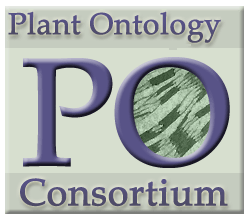Difference between revisions of "Plant Genome Resources Outreach Booth"
| Line 90: | Line 90: | ||
'''''Arabidopsis'' Interactions Viewer''' for querying a database of almost 80,000 predicted and 2,800 documented protein-protein interactions in Arabidopsis. | '''''Arabidopsis'' Interactions Viewer''' for querying a database of almost 80,000 predicted and 2,800 documented protein-protein interactions in Arabidopsis. | ||
| − | + | [http://www.bar.utoronto.ca/ntools/cgi-bin/BAR_Promomer.cgi Promomer] for identifying over-represented n-mer words in the promoter of a gene of interest, or in promoters of co-expressed genes. | |
and several other useful tools! | and several other useful tools! | ||
| − | |||
Revision as of 17:32, 28 June 2010
Visit a collection of plant genomics databases and projects with resources for sequenced genomes, ontology development, genetic mapping, functional annotation of genes, mutants and phenotypes, genetic diversity and bioinformatics tools. Representatives from the projects will be present to demonstrate tools for cutting-edge genomics and genetics research and to answer questions.
Projects Represented at the Booth:
Plant Ontology Consortium
 See our web page for more information: http://www.plantontology.org
See our web page for more information: http://www.plantontology.org
The main objective of the Plant Ontology Consortium (POC) is to develop, curate and share controlled vocabularies (ontologies) that describe plant structures and growth and developmental stages, providing a semantic framework for meaningful cross-species queries across databases. The Plant Ontology (PO) has been developed and maintained with the primary goal to facilitate and accommodate functional annotation efforts in plant databases and by the plant research community at large. As a part of the POC project, participating databases such as TAIR, NASC, Gramene and MaizeGDB have been using PO to describe expression patterns of genes and phenotypes of mutants and natural variants.
Come see Poster # P14010: The Plant Ontology: A Database for Plant Genomics
Plan to attend the Plant Ontology and Gramene Gene Annotation Workshop Saturday, July 31st, 8 am-12 pm, (pre-registration required)
Gramene
 http://www.gramene.org/plant_ontology/
http://www.gramene.org/plant_ontology/
Solanaceae Genomics Network
Maize Genetics and Genomics Database
MaizeGDB is a community database designed to disseminate biological information on the important crop plant, Zea mays ssp. mays to a user community that is as diverse as maize itself.
A variety of datatypes are served through MaizeGDB including genetic, genomic, DNA sequence, gene product, functional characterization, and literature resources.
Accordingly, MaizeGDB is serving as the long-term home of the recently completed maize genome sequence through the MaizeGDB Genome Browser.
In addition, MaizeGDB provides community support services including: person/organization contact information, coordination of annual meetings, conducting elections and surveys, and dissemination of the annual Maize Newsletter.
Challenges to be met in the immediate future include: development of tools and capacities to handle large datasets from Next Generation DNA sequencing, expansion of mutant and phenotype datasets, expansion of structural and genetic maps, and providing access to gene models developed by gene structure prediction groups.
The Arabidopsis Information Resource-TAIR
The Bio-Array Resource for Plant Functional Genomics
The Bio-Array Resource at the University of Toronto is a collection of web-based tools for exploring, visualizing and mining large-scale data sets, primarily from Arabidopsis thaliana but also from several other plant species.
These tools include:
eFP Browser (electronic Fluorescent Pictograph Browser) for painting gene expression and other information onto diagrammatic representations of the particular experimental series from which the data were generated. An Arabidopsis, Poplar, Medicago truncatula, Rice, Barley, and Cell eFP Browser are available.
Expression Angler for identifying co-expressed, anti-correlated, or condition/tissue-specific genes using the "custom bait feature" in 5 of the gene expression data sets from the AtGenExpress Consortium, from our in-house database or from NASCArrays, or several other data sets.
Expression Browser for performing electronic northerns.
Arabidopsis Interactions Viewer for querying a database of almost 80,000 predicted and 2,800 documented protein-protein interactions in Arabidopsis.
Promomer for identifying over-represented n-mer words in the promoter of a gene of interest, or in promoters of co-expressed genes.
and several other useful tools!


